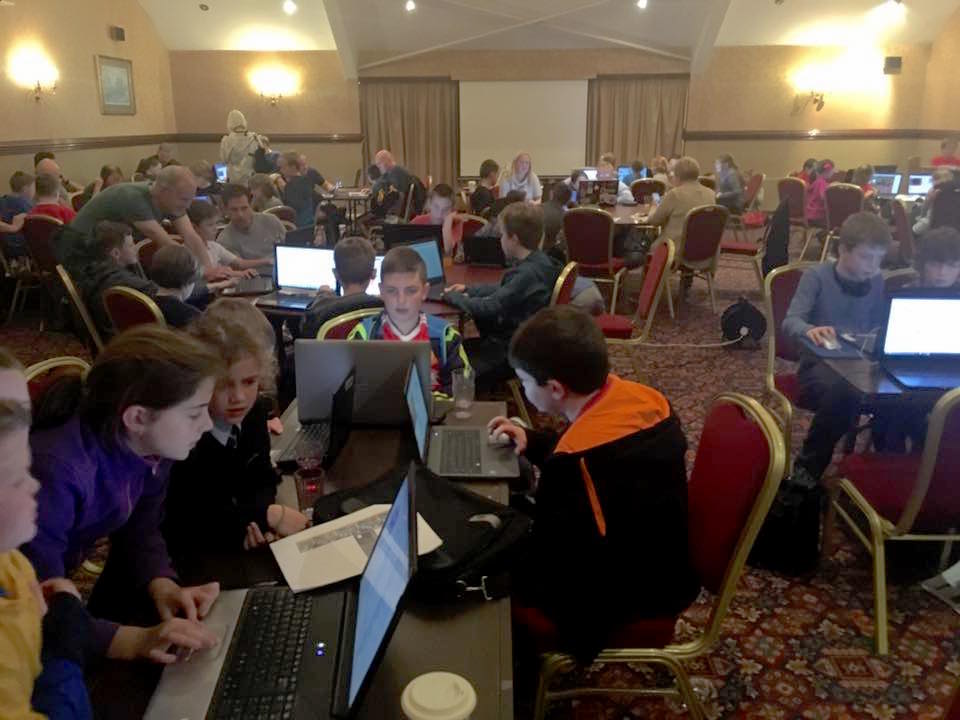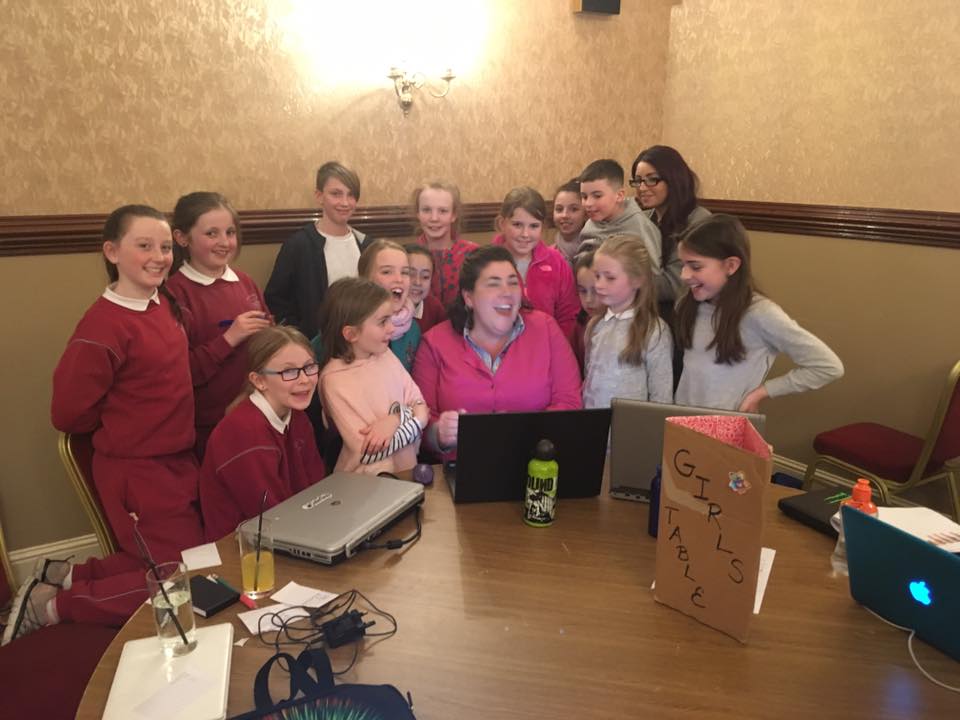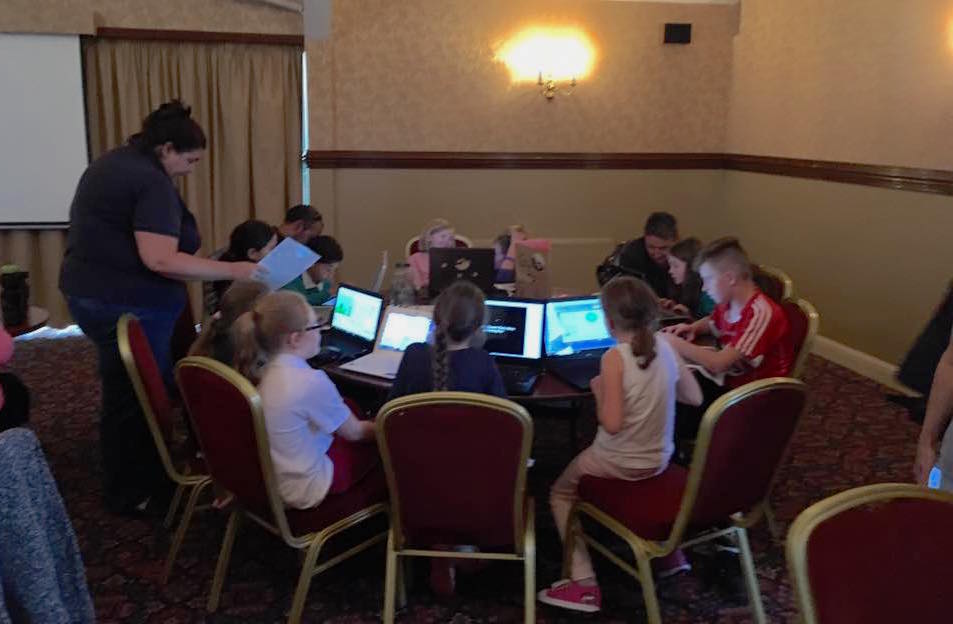
4th December 2017
How parent & Mentor, Wendy, created a space to support girls in her Dojo
Wendy, a parent and Mentor at Clonakilty Dojo in Cork, shares her experiences of challenging gender disparity in her Dojo and how she developed a space to engage girls more:
Our Dojo, which is in its 6th year is quite large. Approximately 60-75 children aged from 7–17 attend each session. In 2015 we had a heavy representation of boys compared to girls, with a 90:10 split. Each year, very few girls would return after the Christmas break. In addition, girls might come to hang with their brothers – but few would engage with the technology. To tackle the disparity and encourage girls to engage more we started the Girls Table after the Christmas break 2015. I discussed the low numbers of girls attending with Margaret Deegan (our amazing and incredible champion). I was concerned that my daughters were becoming less interested in CoderDojo and I surmised that it was due to their lack of ability to socialise. Their lack of interest meant that soon they would not want to attend which broke my heart.
How did you decide on the Girls Table?
I realised that I had to make CoderDojo more accessible for my own two girls in order to keep them going. I thought about what made technology fun for me when I was younger and I started to read about how to engage girls with technology. I learned that girls and boys tend to approach technology differently and use technology for different reasons. In addition, I noticed that girls at our Dojo were feeling overwhelmed by the sheer numbers and the energy of the boys. My first step was to carve out a space just for the girls. I discussed a separate table with Margaret and she was very supportive.
How did you implement it?
We chose a table to the side – not in the middle of the jungle but not too far away from the rest of the crowd either. We made sure we had the same table each week and I assigned myself as the primary mentor for the group. Margaret announced it at the beginning of the Dojo – very diplomatically, and we were off. I made sure I was first in the room on the night and invited girls to come sit at our new girls table. That was it. When a few boys came to sit at the table I suggested other seats for them – again trying to keep it all low key. I didn’t want to seem too militant about keeping it girls only. That just creates an unnecessary divide and honestly I would have been irate if they had made a boys only table. But the girls themselves were quite territorial about their table – so I knew I was onto something.
We call the table ‘Girls Table’ – that’s it – again we don’t want to get too exclusive – as we don’t want to create a divide in the Dojo. We took an old piece of cardboard and stood it on the table. It read simply “Girls Table”. We have updated the sign with some lights and that’s it – its evolving – I take my direction from the girls now.
What is its aim?
To create a sense of community amongst the girls, to enable them to explore technology at their own pace and to create an environment of support amongst women in tech. If we have girls return and stay for the year this year like we did last year – there can be no better outcome.
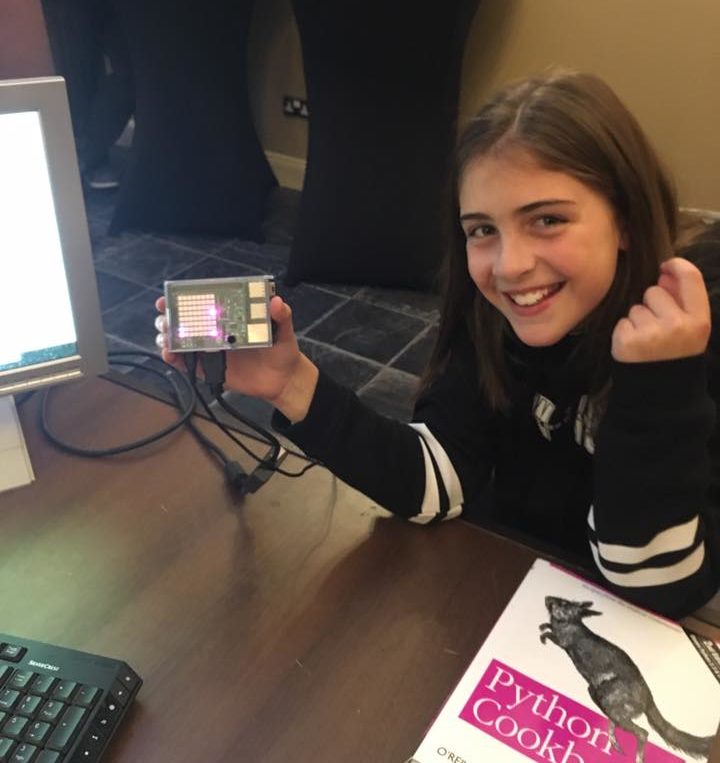 How have others reacted?
How have others reacted?
The boys have taken it in their stride – they accept that the table in the corner is the Girls Table and there is never any issue. While I have assigned myself as the primary Girls Table mentor all mentors come to support the girls – it’s just another table that happens to have mostly girls at it. The girls’ parents were definitely supportive – parents of both a boy and a girl were a bit conflicted – but we’re getting around that by letting siblings sit there too. Eventually the boys go sit somewhere else. And there are times that the girls who mentor other kids in the Dojo will sit with them to help out – but they always return to the girls table.
What is the level of content overlap?
At the moment the content is the same – I am focusing on finding/creating tutorials that apply to girls. The last one we did was for creating a Mad Libs game. The 8 year olds LOVED this idea (even if they called it Mad Lips). Girls often like to solve problems with tech or use it so tell stories. So I created a tutorial for practicing Multiplication Tables and that was also a hit. I am trying to think of the games and things that girls like in real life and try to apply them to Scratch. The next one is for a fortune teller in Scratch. My aim this year is to get some of the girls into the App Inventor. The way girls use technology to solve their problems is a good fit for AppInventor.
How are you communicating the Dojo to encourage gender parity?
We are using social media to highlight what we are doing at CoderDojo. We are also talking to our local primary schools to tell them about the girls table. We are reaching out to the Secondary schools to see if we can find female mentors. We desperately need more mentors! There are usually two and sometimes three female mentors at the Dojo. I think it’s really important to provide role models. Women (including the secondary school students) who enjoy technology and enjoy sharing their knowledge will go a long way to inspiring the next generation of girls.
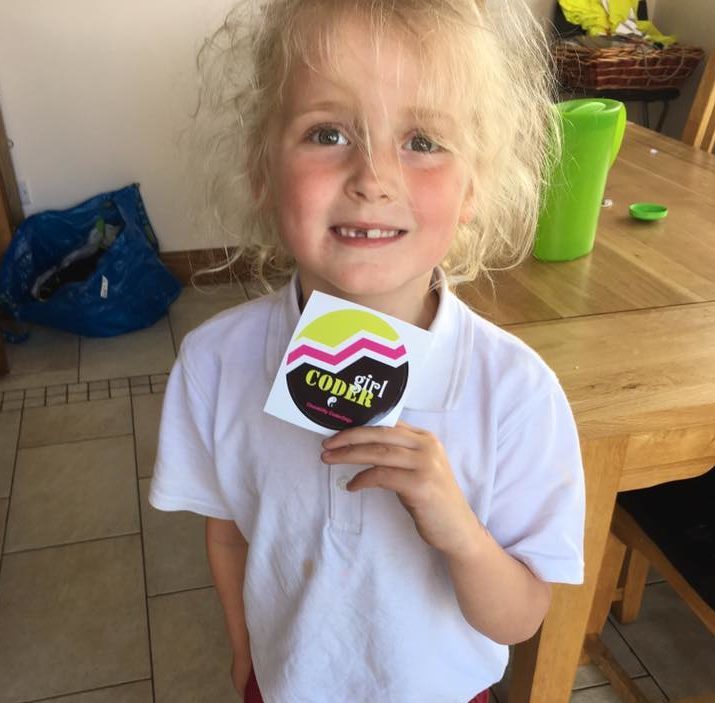
We had a record number of girls who entered the National Scratch Competition (9 entered – more than the number of boys). Margaret had a local paper cover the story and the fact that one of our girls made it to the finals. So whenever we can we are telling people about the table and building on its success. Before the National Scratch competition, I had all the girls show their entries just to the Girls Table. I wanted the girls to relish the sense of achievement – but I also wanted to show the girls how to support one another and how to compete but also be happy for each other. That is something that I want to build on this year. In addition, after the last Dojo for the school year, I designed a sticker for each girl who was at the Expo (our final Dojo day). I mailed it home to each girl with a note thanking them for their involvement and also remarking on something that they brought to the table from the year. My purpose was to provide closure for the year but set them up for success (and a desire to come back) in September.
Thanks to Wendy for sharing her insights and experience to help other Dojos in a similar position. You can find out more about the CoderDojo Girls initiative and our ‘Empowering the Future’ guide with various approaches Dojos are using to achieve greater gender parity in their Dojos here.
